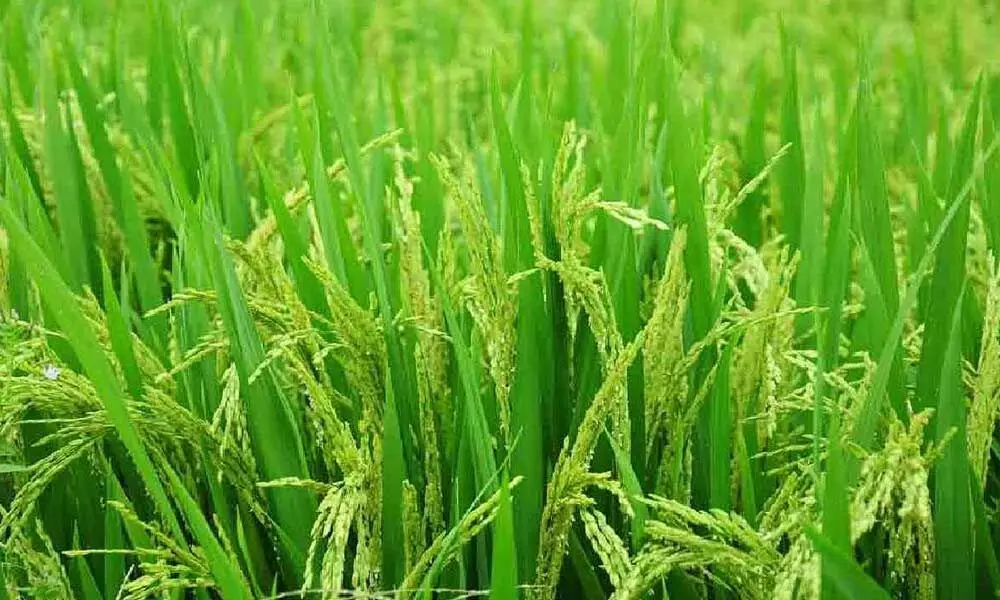Rice fortification can solve procurement challenges

Rice fortification can solve procurement challenges
Rice can be fortified by dusting it in a powdered blend of micronutrients.
Methods for Fortification
The Traditional Method (Dusting)
Rice can be fortified by dusting it in a powdered blend of micronutrients. However, such rice is prone to a great loss of micronutrients while cooking, especially as the rice is washed prior to cooking and people dispose of this water in which the rice is washed. This water is rich in micronutrients, but since it is discarded at the time of cooking, those micronutrients are lost.
Coating
Another method is the coating of the rice grains with micronutrients – in this method, a spray containing vitamins and minerals is sprayed onto the rice grains which coats them with those micronutrients and yields rice kernels that are fortified.
These rice kernels are then mixed with natural rice. This method of fortifying rice grains by coating them significantly diminishes the loss of vitamins and minerals from them that occurs with rinsing.
Extrusion
Recent times have seen the evolution of an innovative technology that creates fortified rice kernels via a process known as extrusion or extrusion processing.
The extrusion methodology involves passing a dough prepared with a mixture of rice flour, vitamins, and minerals via an extruder machine to generate kernels exactly in the shape of rice.
At the time of milling, these moulded rice kernels are finely mixed with natural rice in a specific ratio, and this leads to a yield of fortified rice. The benefit of the extrusion technique is that the rice kernels do not lose their micronutrients while rinsing and cooking.
The extrusion technique employs a powdered form of broken rice as the raw input (raw material). This technique allows rice kernels to be created according to consumers' custom specifications of texture, colour, shape, and nutritive features. This helps the fortified rice kernels to match with the rice with which they are to be blended as per customers' specifications. This rice also has a good international market and is sold at $ 2 per kg.
The extrusion technique predominantly is of two types – i) Hot Extrusion and ii) Cold Extrusion.
Hot Extrusion
The hot extrusion technology employs a process wherein the said dough is processed either via a single or dual screw extruder at the high heat of 70 degrees Celsius to 110 degrees Celsius.
The above process imparts the rice kernels with a texture (consistency and translucency) that is identical to that of the natural rice.
Cold Extrusion
The technique of cold extrusion employs a processing method that is similar to that of hot extrusion. However, in this case, the dough is processed at a lower temperature of fewer than 70 degrees Celsius. Cold extrusion employs a fine, pasta-shaped mould to create fortified rice kernels that are identical to natural rice with relatively more opacity. Studies have found both hot and cold extrusion techniques to be widely accepted at helping rice retain a significant proportion of its nutritive value.
Warm Extrusion
There is another type of extrusion known as warm extrusion. This is performed at a transient temperature that facilitates limited but not complete melting of amylopectin. The magnitude of amylopectin melting has a prominent bearing on the structure of rice-shaped kernels.
Biofortification
Biofortification is a unique rice fortification method that allows growing rice varieties containing superior levels of vitamins and minerals.
This method either entails selective breeding of rice varieties that hold high levels of vitamins and minerals or via transgenic methods that regulate genetic material in the rice cultivars to promote greater storage of vitamins and minerals in the rice kernels.
It is believed that traditional crop breeding methodologies may yield varieties of rice that contain 400 to 500% greater iron content when compared to the cultivars generally eaten in Asia.
Research is in progress to achieve a stable rice crop variety that will give great yields and also contain rich amounts of vitamins and micronutrients suitable for human consumption.
The above efforts, if successful, will complement the fortification of rice for human intake.
Key Possible Takeaways
The fortification of rice will prevent vulnerable sections of the population from being undernourished. Since rice is a staple food, its fortification will create greater avenues to make it affordable even to the poorest of the poor. Fortification of rice will also help achieve a population with generally good levels of immunity, need of the hour. It will keep the productivity and industrial efficiency of the country on an upward trajectory through a healthy and productive workforce.
Child malnourishment can be arrested. Rice fortification can help prevent the birth of babies with impaired body parts and health. It will help prevent stunted growth of young children.
Conclusion
Path-breaking technologies for the fortification of rice now exist, but their full potential has not been materialized. If technologies like rice extrusion and fortification can be leveraged by nations across the world, it will help achieve a significant decrease in the incidences of diseases that occur due to VMD. If promoted on a large scale, it can be cost effective and also address problems of procurement between the states and the centre. Evolving and promoting a sustainable rice fortification campaign across the world might encounter similar adversities and prospects as were encountered during the salt iodization and wheat flour fortification initiatives. Instituting a rice fortification regime as a norm on a global level is important to achieving the United Nations' Millennium Development Goals (MDGs).
There is already a pressing need to establish a global rice fortification initiative as it would be a highly cost-efficient human development initiative to solve issues of hunger and malnourishment on a large scale.
It is highly essential to address all the challenges that such a rice fortification initiative would face with uncompromising conviction because one's health is the greatest wealth. Staying healthy is not just to be physically fit, but also includes emotional, social and mental well-being.
(Team Hans in association with WTC)















